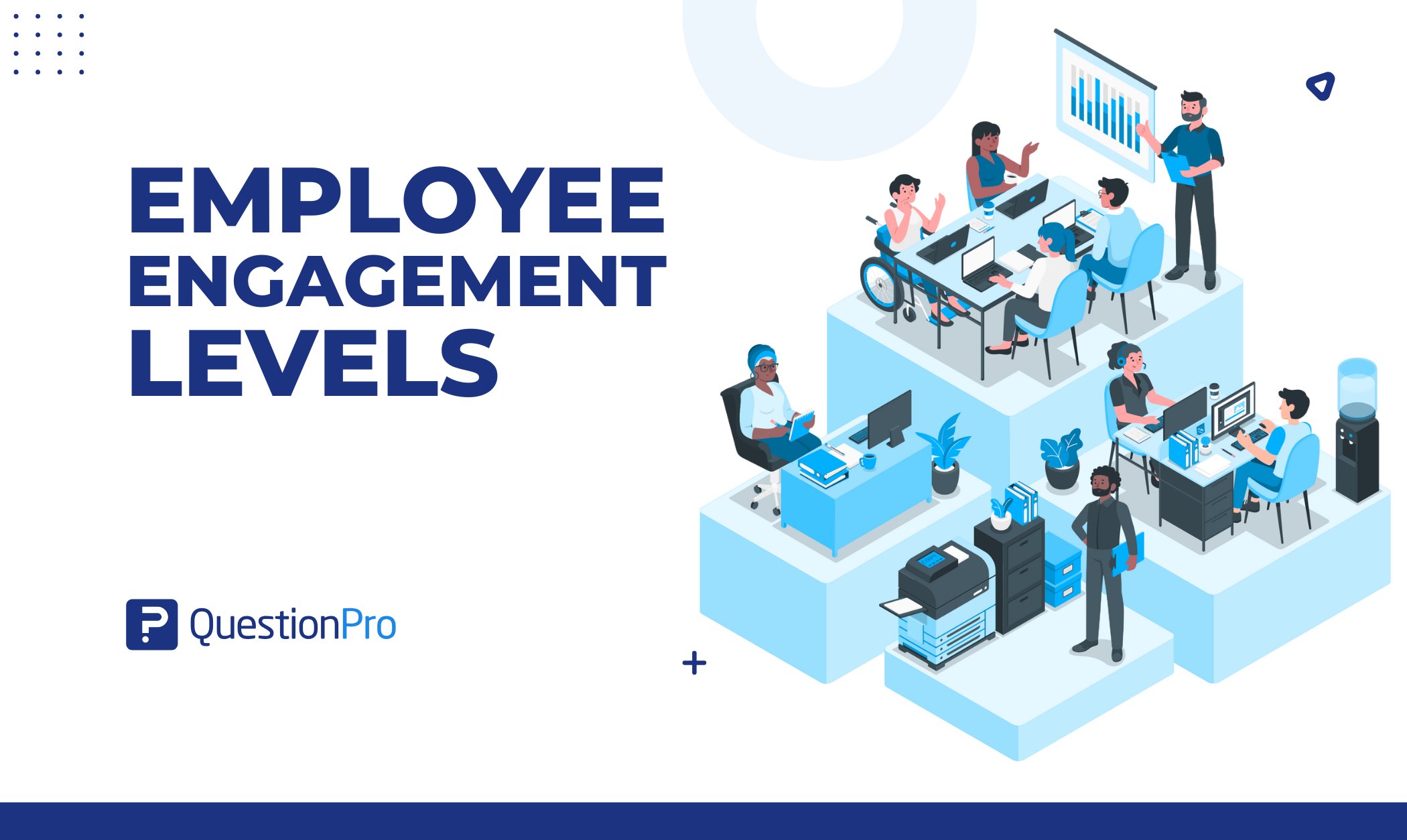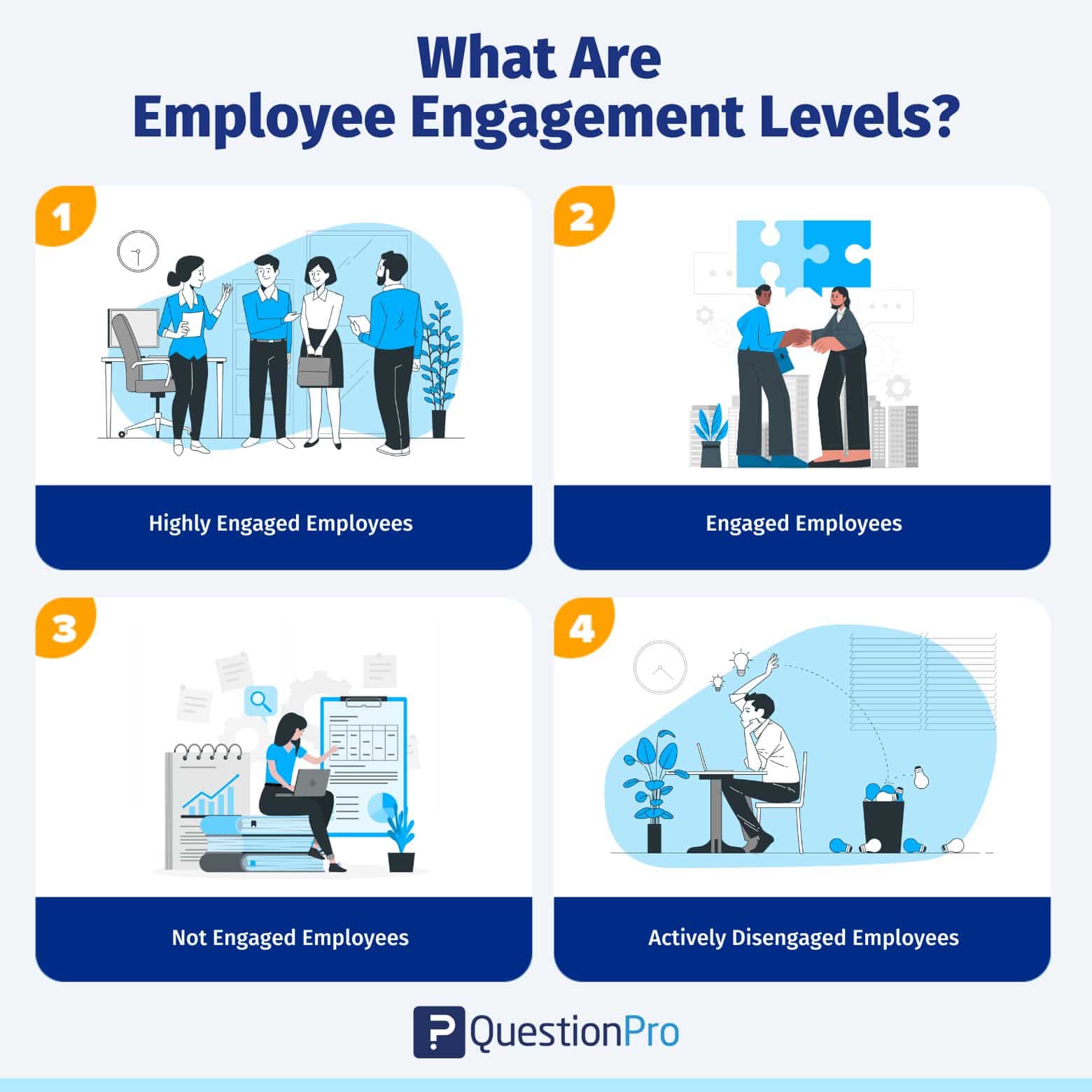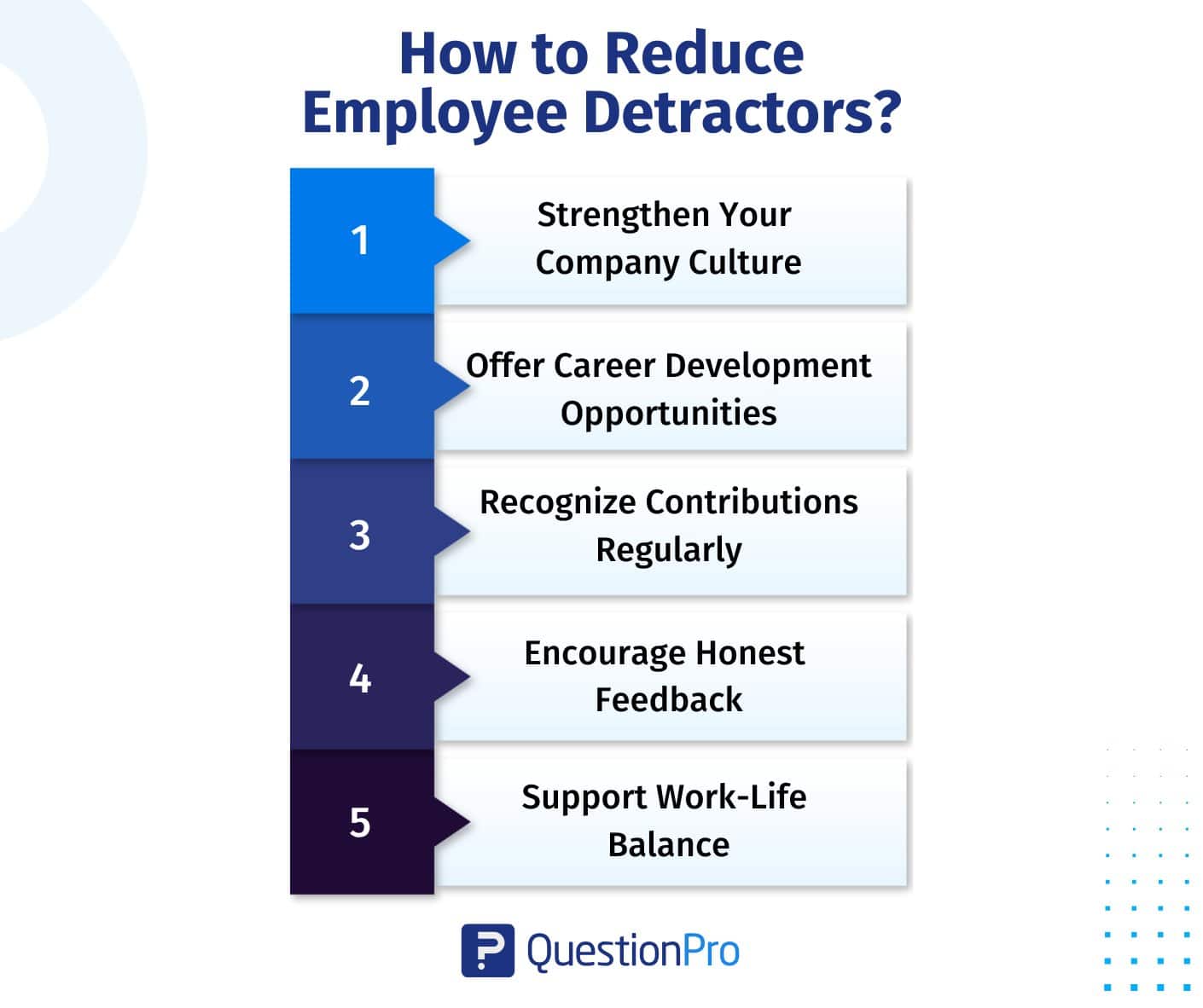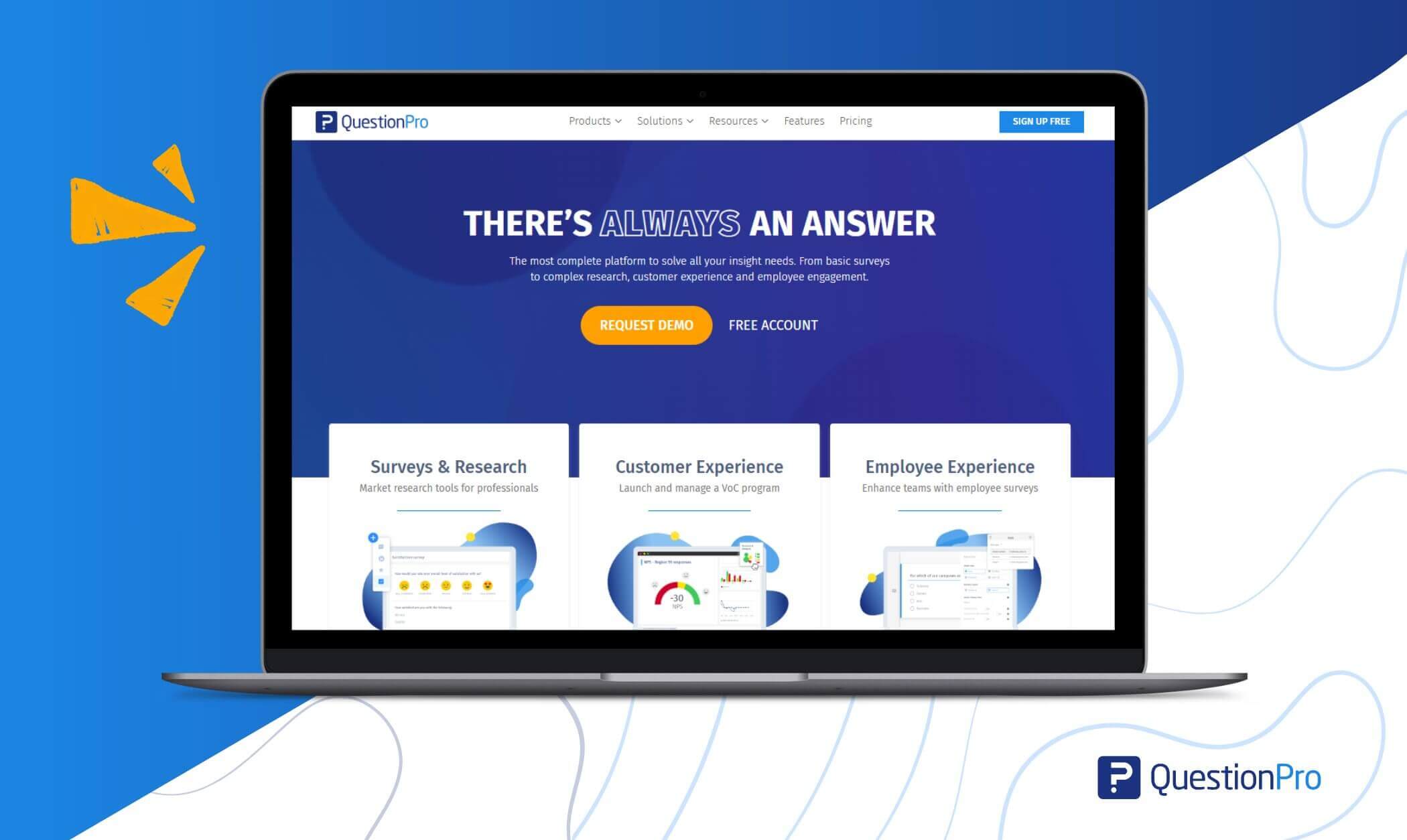
Employee engagement levels are one of the clearest indicators of how your employees feel about their work and how likely they are to stay, perform well, and contribute to business success.
So what exactly are employee engagement levels, why do they matter, and how can you improve them?
Let’s explore the stages of employee engagement, how to measure them with confidence, and the strategies that can boost engagement across your organization.
What Are Employee Engagement Levels?
Employee engagement is more than just job satisfaction. It’s about how emotionally committed employees are to their work, team, and organization. Engaged employees are enthusiastic about their roles and consistently go the extra mile to contribute to the organization’s success.
Employee engagement levels refer to the degree to which employees feel connected, committed, and motivated at work. They give you a snapshot of your workforce’s mindset from highly engaged employees who are energized and aligned with company goals, to actively disengaged employees who may be checked out or even harming team morale.
Here’s a closer look at the four common employee engagement levels:

- Highly Engaged Employees
These individuals are emotionally invested in their work, aligned with company values, and deeply connected to the organization’s success. They consistently go above and beyond, help boost team engagement, and often have a positive influence on others.
- Engaged Employees
Generally satisfied and motivated, engaged employees contribute effectively to their teams. They support company goals and often participate in engagement initiatives, but may not always take the lead or show sustained enthusiasm.
- Not Engaged Employees
These employees are often neutral, neither happy nor unhappy. They do what’s required but lack the drive or emotional connection to go beyond basic responsibilities. Their potential remains untapped, which can affect productivity.
- Actively Disengaged Employees
This group may feel frustrated, disconnected, or undervalued. They’re not just uninspired. They may openly criticize the company, resist collaboration, and negatively impact workplace culture and morale.
Recognizing where your workforce falls across these engagement levels is crucial to enhancing the employee experience and driving business outcomes.
Why Employee Engagement Levels Matter in the Workplace?
Your workforce’s employee engagement levels directly impact employee retention, performance, and company culture. Research consistently shows that organizations with more engaged employees outperform others across critical areas:
- Lower employee absenteeism and employee turnover
- Higher employee satisfaction and morale
- Better customer satisfaction and customer loyalty
- Stronger team engagement and collaboration
- Higher levels of employee job satisfaction and mental health
When employee engagement levels are high, employees feel valued, aligned with the company’s mission, and motivated to contribute. When engagement levels drop, productivity suffers, morale decreases, and the risk of disengaged employees increases.
How to Measure Employee Engagement Levels?
Measuring engagement is about more than just checking in once a year. It requires ongoing listening, the right tools, and clear employee engagement metrics.
The most effective way to measure employee engagement levels is through well-designed employee surveys, including:
- Pulse surveys: Quick, regular check-ins to monitor sentiment and employee expectations
- Annual employee engagement surveys: In-depth surveys covering engagement drivers, company culture, and job satisfaction
- 360 feedback surveys: Holistic feedback from peers, managers, and reports to evaluate performance and team dynamics
You can also use metrics like:
- Satisfaction ratings
- Turnover and absenteeism trends
- Feedback from recognition programs or engagement initiatives
Tips to Improve Employee Engagement Levels
Once you’ve identified where your workforce stands, it’s time to put those employee engagement efforts into action. Here are a few tried-and-true strategies:
- Build employee recognition programs to celebrate wins.
- Invest in career development and advancement opportunities.
- Create a positive work environment that supports mental health.
- Communicate openly about employee expectations and feedback.
- Align employee contributions with your company’s goals.
- Foster a workplace culture where employees feel heard and respected.
These engagement initiatives not only boost engagement but also support employee loyalty and retention.
Boosting Employee Engagement Levels
Once you have a clear picture of where your employee engagement levels stand, the next step is action. Improving engagement requires thoughtful strategies and a culture of listening.
Here are some proven ways to increase employee engagement:

- Strengthen Your Company Culture
A positive workplace culture rooted in respect, purpose, and transparency helps employees feel connected and supported.
- Offer Career Development Opportunities
When employees see a future with your company, they stay longer. Offer career advancement opportunities and support their growth.
- Recognize Contributions Regularly
Employee recognition programs show your people that their work matters. Recognition fuels motivation and engagement.
- Encourage Honest Feedback
Make it easy for employees to speak up, whether anonymously or in open forums. Use their feedback to inform engagement strategies.
- Support Work-Life Balance
Flexible work options, mental health support, and a healthy work-life balance all contribute to higher engagement levels.
Measuring Engagement Levels with Surveys
To truly understand your workforce, you need reliable data. Surveys are one of the most effective ways to monitor and assess employee engagement levels. They capture real-time sentiment, uncover hidden concerns, and highlight what drives or hinders engagement.
With QuestionPro survey tools in place, you can go beyond gut instinct and act on measurable, trackable feedback.
Benefits of Using Survey Software like QuestionPro
QuestionPro’s employee engagement software simplifies the process of collecting, analyzing, and acting on employee feedback. Here’s how it supports your engagement strategy:
- Pre-built templates tailored to employee engagement trends and drivers
- Anonymous or identifiable survey options to fit your feedback style
- Easy-to-use interface for both HR teams and employees
- Real-time dashboards to visualize engagement levels as responses come in
- Automated workflows and recurring survey scheduling
These features empower HR and senior management to enhance employee engagement, reduce employee turnover, and boost organizational success.
Types of Surveys to Use
Not all surveys are created equal. To get a complete picture of employee engagement levels, combine multiple survey types, like pulse surveys, employee engagement surveys, or 360-degree feedback surveys.
Each survey type plays a crucial role in identifying engagement drivers and uncovering what motivates employees or causes disengagement.
Sample Engagement Survey Questions
Here are a few practical questions you can include in your employee engagement surveys:
- On a scale of 1–10, how likely are you to recommend this company as a great place to work? (eNPS)
- Do you feel your manager recognizes your contributions?
- Do you have the tools and support needed to do your job well?
- Are you satisfied with the level of communication from leadership?
- Do you see a clear path for career development within the company?
- Do you feel connected to the company’s mission and goals?
These questions help surface valuable insights into employee sentiment, motivation, and job satisfaction.
Anonymous vs. Identifiable Responses
There’s value in both anonymous and named responses. Anonymous surveys encourage openness, especially from disengaged or frustrated employees who may fear repercussions. Identifiable surveys, on the other hand, allow you to follow up on specific concerns and offer personalized support.
With QuestionPro, you can choose the right approach based on your culture and communication goals, or offer both. Flexibility is crucial for gathering honest and actionable employee feedback.
Using QuestionPro to Track Progress
Collecting feedback is just the beginning. What matters most is using that data to track and improve employee engagement levels over time.

1. Setting Up Dashboards for Real-Time Monitoring
With QuestionPro, your data doesn’t sit in spreadsheets. You can build interactive dashboards that give leadership teams and managers a live look at employee engagement trends, pulse check results, and survey participation rates.
This transparency fosters accountability and drives more innovative engagement initiatives.
2. Custom Reports and Longitudinal Tracking
Compare this year’s engagement results with last year’s. Track how employee sentiment shifts after a policy change. See which departments are thriving and which need attention.
QuestionPro’s custom reports and longitudinal data views make it easy to monitor patterns, identify gaps, and measure the ROI of your engagement strategies.
3. Integrations with HR Systems for Deeper Insights
For even deeper insights, QuestionPro integrates with leading HR systems. You can connect engagement data with performance reviews, absenteeism rates, onboarding outcomes, and other key metrics.
This big-picture view enables HR teams and senior management to link engagement levels to tangible business outcomes, uncovering opportunities to enhance both employee experience and organizational health.
Conclusion
Understanding and improving employee engagement levels isn’t just good for morale; it’s a business imperative. Highly engaged employees contribute more, stay longer, and create a ripple effect that drives customer satisfaction, organizational success, and a strong company culture.
With tools like QuestionPro, measuring and improving engagement becomes more practical, actionable, and aligned with your goals. Whether you’re launching your first engagement survey or optimizing an existing program, now’s the time to prioritize your workforce’s engagement.
Ready to boost engagement across your organization? Let QuestionPro help you get started.
Frequently Asked Questions (FAQs)
Answer: Employee engagement levels represent how connected, motivated, and committed employees feel at work.
Answer: They impact everything from productivity and job satisfaction to employee turnover and company culture.
Answer: You can use tools like employee surveys (pulse, annual, 360 feedback), track eNPS scores, review absenteeism data, and gather feedback through recognition platforms or internal forums.
Answer: Low participation, lack of enthusiasm, frequent absenteeism, and resistance to collaboration can indicate disengagement.
Answer: Survey platforms like QuestionPro allow you to collect, analyze, and act on employee feedback with features like real-time dashboards, automated workflows, and customizable reports.







